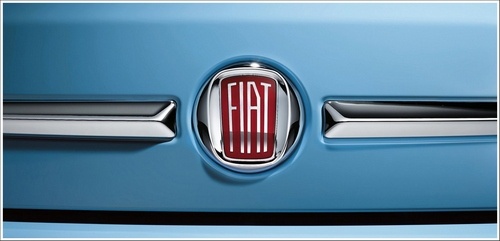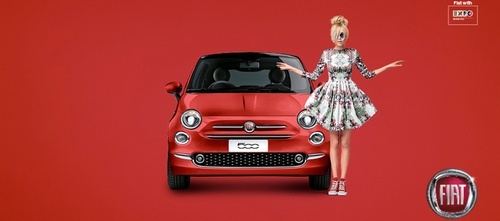The Marketing mix of Fiat analyses the 4Ps of Fiat, which includes the Product, Price, Place, and Promotion of Fiat. Fiat Automobiles is a subsidiary of its parent company Fiat Group. It is of Italian origin and was established in 1899 by its founder, Giovanni Agnelli. It is associated with the automotive industry and deals in the manufacturing of automobiles. It is a luxury brand with unique and elegant designs. The company has targeted people from upper and upper-middle-income groups as its potential target customers. It faces stiff competition in the consumer market from the following companies-
- Ford
- Volkswagen
- Toyota
- Skoda
- Tata Motors
- Maruti Udyog
- Mitsubishi
- Chevrolet
- Hyundai Motors
- Nissan Motors
- Honda
About Fiat
- Type: The automobile manufacturer
- Industry: Automotive
- Founded: July 11, 1899
- Founder: Giovanni Agnelli
- Headquarters: Turin, Italy
- Area served: Worldwide
- Key people: John Elkann (Chairman) and Olivier François (CEO)
- Number of employees: 290,000
Table of Contents
Fiat Product Strategy
Fiat was the largest manufacturer of cars in Italy and occupied a ninth market position in the global market for passenger cars. It believes in customer satisfaction, and its products testify to this. The company has a long history of manufacturing products.
It has produced engines, electric vehicles, carriages, vehicles for military usage, aircraft, etc. Fiat manufactures commercial cars like SUVs, Sedans, Hatchbacks, and auto parts. Fiat produces new products for twelve vehicle brands like Ram Trucks, Lancia, Ferrari, Fiat, Dodge, and Alfa Romeo.
Italy’s product portfolio and range include small cars, luxury variants, and Ferrari. It also manufactures production systems, metallurgical products, construction and agricultural products, commercial vehicles, buses, and trucks. In India, it manufactures transmissions, engines, and automobiles like Linea, Avventura, and Punto Eva. In Japan, it offers the Panda and Fiat 500 in both convertible and coupe body styles.
The product mix of Fiat in 2023 is as follows(Source)
- Compact and Subcompact Cars: Fiat is known for its compact and subcompact car offerings, which are prevalent in urban environments due to their maneuverability and efficiency. Examples include the Fiat 500 and Fiat Panda.
- Sedans: Fiat also manufactures sedans that are suitable for individuals and families looking for a comfortable and practical mode of transportation. Some of Fiat’s sedan models include the Fiat Tipo and the Fiat Linea (availability may vary by region).
- Crossovers and SUVs: To cater to the growing demand for crossover and SUV vehicles, Fiat has introduced models such as the Fiat 500X and Fiat Freemont (known as the Dodge Journey in some markets).
- Electric and Hybrid Vehicles: As part of its commitment to sustainability, Fiat has begun offering electric and hybrid versions of some of its models. The Fiat 500e is an example of an electric vehicle in the lineup.
- Commercial Vehicles: Fiat produces a range of commercial vehicles, including vans and compact trucks, under the Fiat Professional brand. These vehicles serve various business and industrial needs.
- Performance and Sports Cars: Fiat occasionally introduces performance and sports car models under the Abarth brand, known for their spirited driving characteristics and sporty design.
Fiat Place Strategy
Fiat has spread its product network in several countries around the world. The primary target market of Fiat cars has been Europe and South America. It has special ties with the United States as a manufacturing plant opened in Poughkeepsie in 1908 and began manufacturing Fiats the following year. It has formed joint ventures in Russia, Serbia, Pakistan, Turkey, France, and Italy. It has a joint deal with Tata Motors in India and Chery Motors in China.
Fiat has manufacturing plants in countries like Argentina, Mexico, and Poland, but Brazil is the largest. Its annual production capacity is nearly two million cars. The company is served by an efficient workforce that includes almost 130,000 employees working all over the world. In India, the manufacturing plant is located at Ranjangaon in Maharashtra. Fiat has the competitive advantage of brand loyalty and a strong distribution network that involves dealership programs
Here are five critical points related to Fiat’s place strategy:
- Global Dealership Network: Fiat maintains a global dealership network strategically located in urban and suburban areas to ensure customers can access its vehicles and services conveniently.
- Online Sales Platforms: In response to changing consumer preferences, Fiat offers online sales platforms that allow customers to configure, purchase, and even arrange home delivery of their vehicles directly through the Fiat website.
- Authorized Service Centers: Fiat establishes authorized service centers near its dealerships to provide customers with maintenance, repairs, and after-sales support, enhancing the overall ownership experience.
- Local Assembly and Production: Fiat may establish local assembly or production facilities in key markets to reduce import costs and improve availability, tailoring its place strategy to regional demands and regulations.
- Commercial and Fleet Sales: Fiat engages in commercial and fleet sales partnerships with businesses and government agencies, offering vehicles suitable for various professional and organizational needs.
Fiat Pricing Strategy
Fiat is an international company with a global presence. Its products are of high quality and are available in several countries of the world. It faces stiff competition in the consumer market and cannot afford to adopt a premium pricing policy. For its first-class products, the company has adopted a mid-premium pricing policy. It solves many of its pricing strategy dilemmas as it can now face its competitors with competitive pricing that is marginally higher but closer to them.
Fiat has encouraged value-based marketing strategies and pricing systems as it knows its products are superior to those of its rivals. Consumers prefer qualitative products and do not hesitate to shed a few dollars more for better products. During specific periods, brands cut down their prices to make them more attractive and economical to attract customers. The company has kept reasonable prices for its products to make them affordable for its customers.
Here’s an overview of Fiat’s price strategy:
- Competitive Pricing: Fiat adopts competitive pricing to position its vehicles attractively within their respective segments. This approach considers factors such as vehicle features, performance, and brand reputation to offer compelling value to customers.
- Segment-Based Pricing: Fiat carefully assesses each vehicle segment and prices its models based on their perceived value, market demand, and competition. This allows Fiat to capture a diverse range of consumers by offering a variety of price points across its product lineup.
- Incentives and Discounts: To stimulate sales and remain competitive, Fiat occasionally offers incentives, discounts, and promotional campaigns, particularly during regular buying seasons or to clear out inventory of outgoing models. These strategies help attract budget-conscious consumers and maintain sales momentum.
- Value-Added Features: Fiat often includes value-added features and options that justify premium pricing for specific trims or models. By offering advanced technology, safety enhancements, and comfort amenities, it enhances the perceived value of its vehicles.
- Sustainability and Efficiency: As consumer preferences shift toward eco-friendliness and fuel efficiency, Fiat may price its electric or hybrid models competitively to align with sustainability goals and attract environmentally conscious buyers.
Fiat Promotion Strategy
Fiat has been involved in several events and sponsorship programs. In 1971, its model, the Fiat 124 Sports Spider, participated in the World Rally Championship. The Fiat 131 Abarth replaced the 124 and became a successful rally car. It won the World Rally Championship thrice in 1978, 1977, and 1980. Fiat Punto S1600 in 2003 won the Italian Rally Championship, and Fiat Grande Punto S2000 in 2006 won the FIA European Rally Championship with wins in consecutive years 2009, 2010, and 2011.
In 2009, the company launched the Fiat brand in the United Kingdom and signed a deal with BSM, or British School of Motoring, to use the Fiat 500 as its learner vehicle. According to this contract, Fiat United Kingdom would supply 14,000 cars to BSM in four years.
Fiat’s promotion and marketing strategy centers on three core markets:
- Digital Marketing: Fiat leverages digital channels, social media, and online advertising to reach a global audience, showcasing its vehicles’ features, innovations, and brand personality.
- Event Marketing: Fiat participates in international auto shows, product launches, and experiential events to create buzz, unveil new models, and connect with automotive enthusiasts.
- Collaborative Marketing: Fiat often collaborates with influential figures, artists, and organizations to amplify its brand message and foster community among its customers and fans.
Some Recent Video ads and Print ads of Fiat are:
Liked this post? Check out the complete series on Marketing Mix


I have enjoyed reading your write up. I have one important question I need an answer to. What is the Marketing strategy for the Fiats 500X? I shall be very grateful for a quick response.